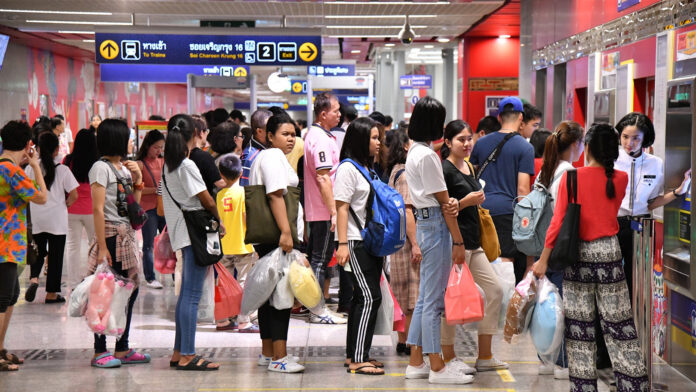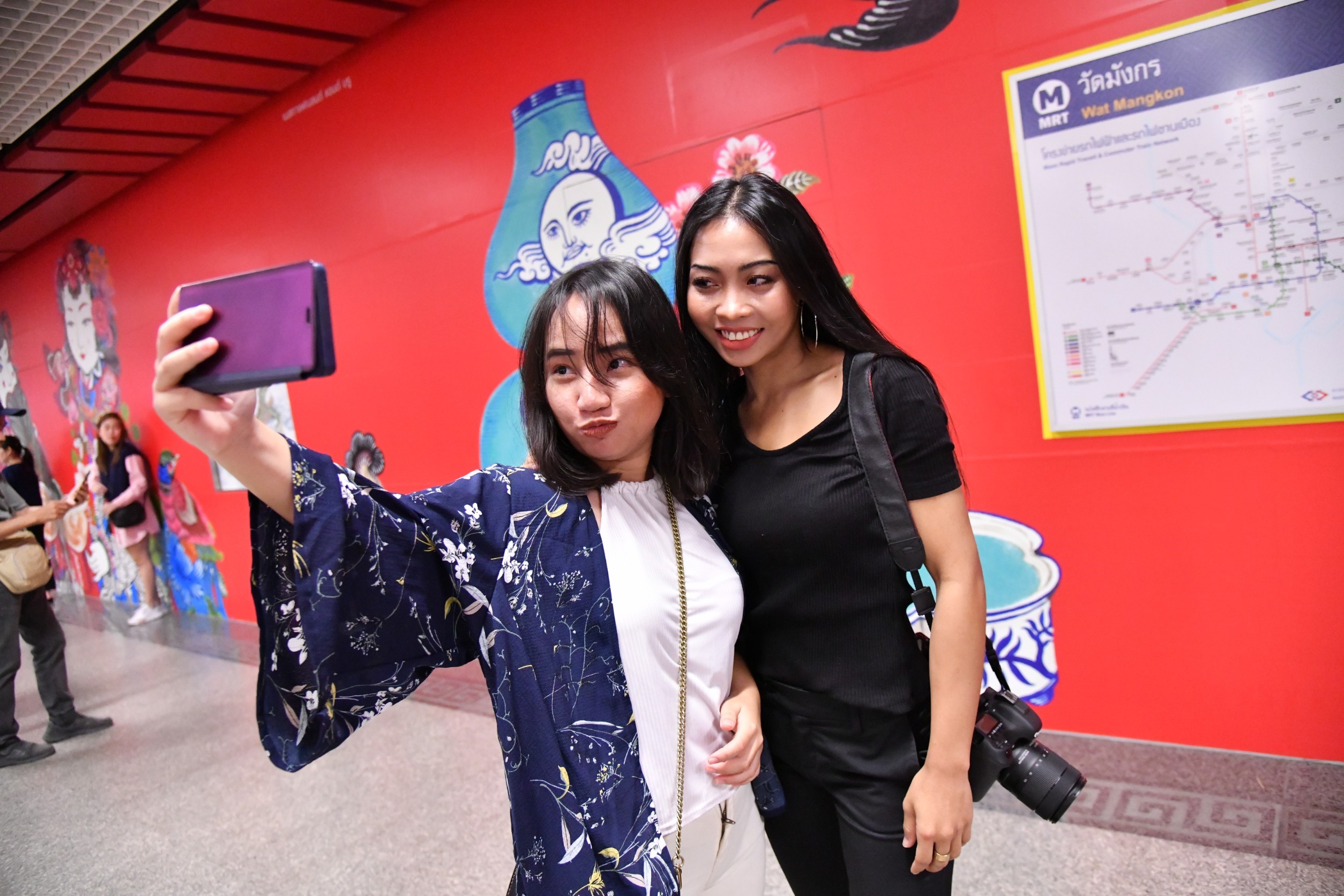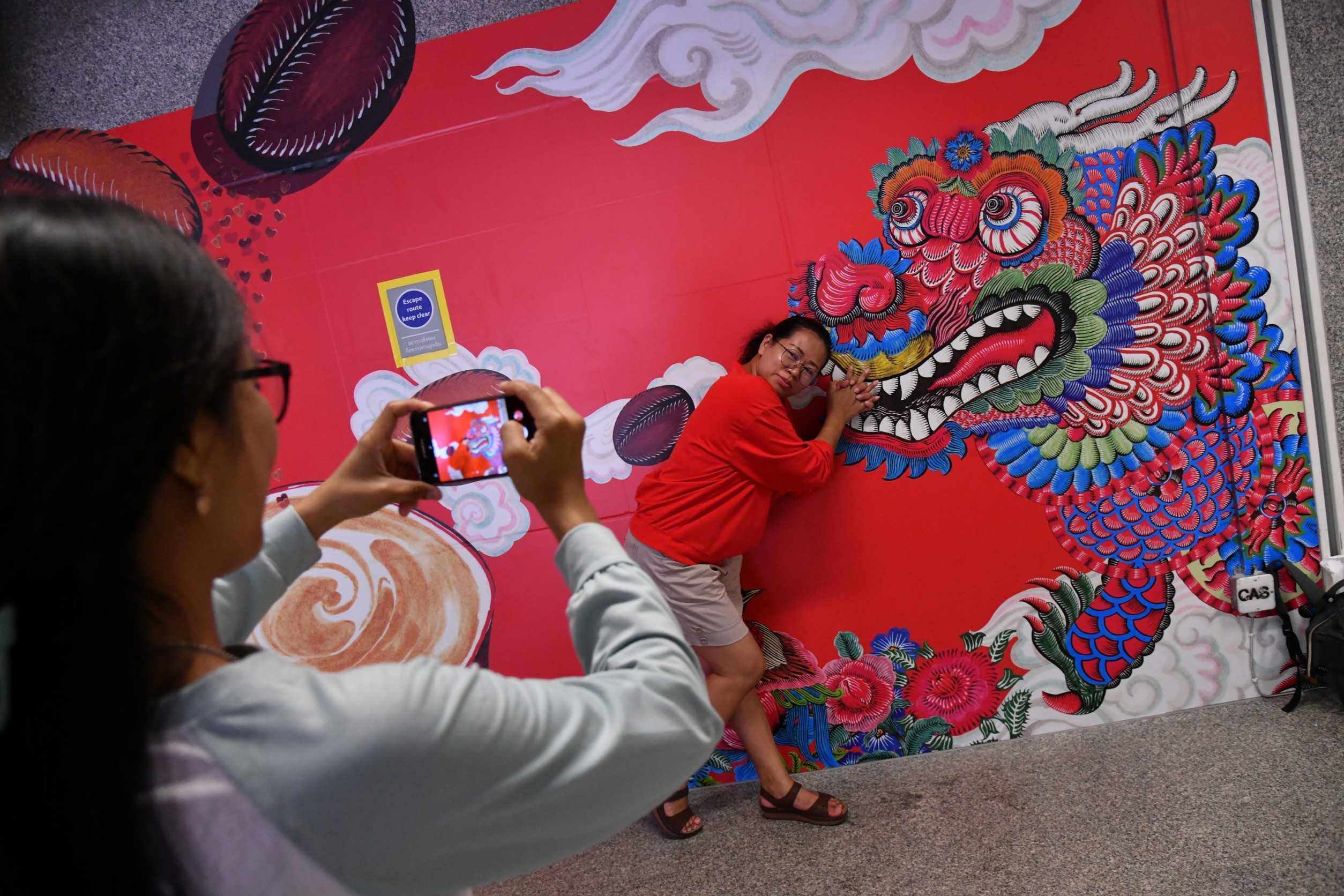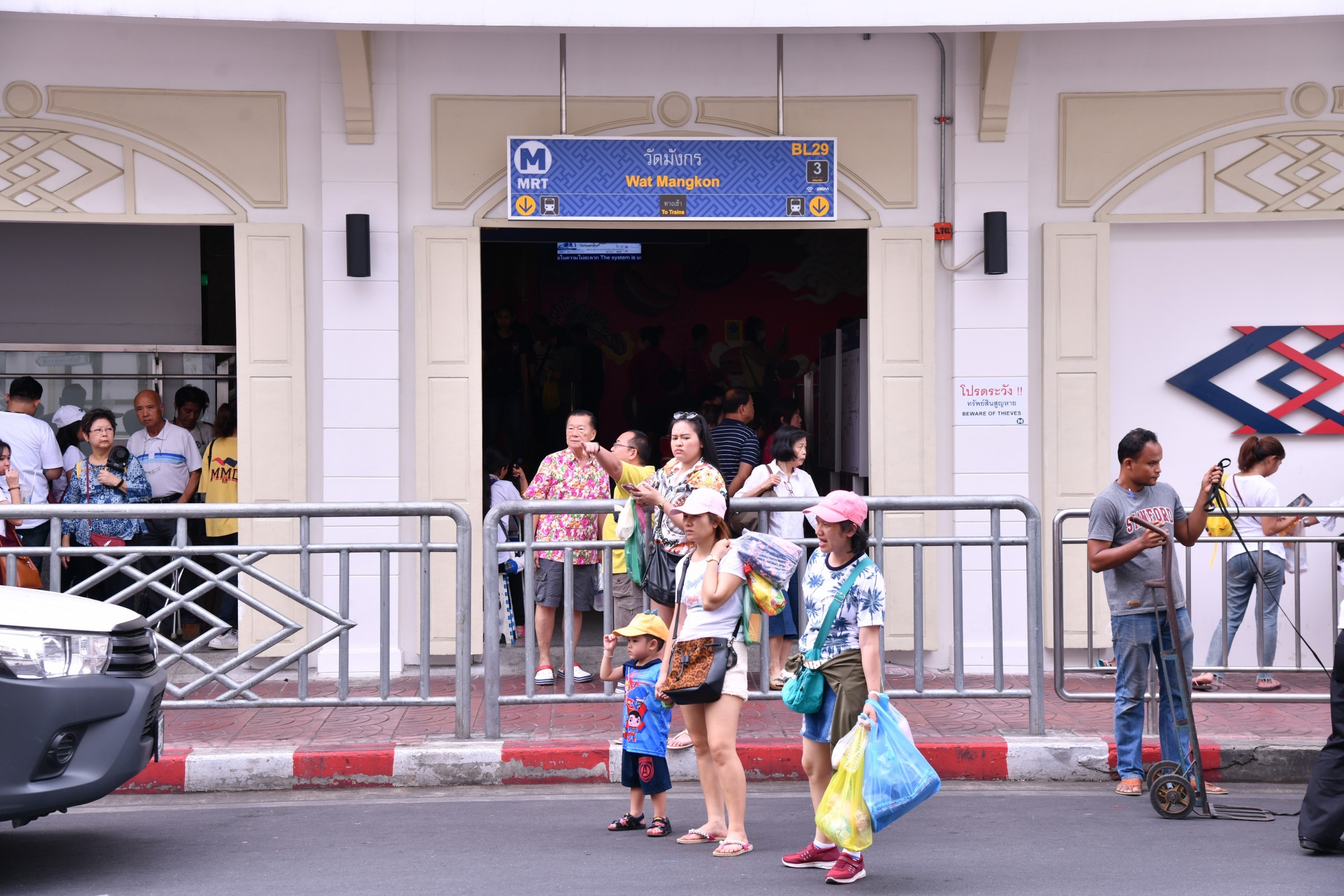
BANGKOK — New MRT stations connected to tourist destinations such as the Grand Palace and Chinatown are becoming destinations themselves as visitors cram to see their unique designs.
More than 50,000 people participated in the first day of tests rides along the extension of the Blue MRT Line on Monday, according to the Mass Rapid Transit Authority of Thailand. The new stations have been uniquely designed to reflect local history and blend in with surroundings.
The most elaborate is MRT Sanam Chai, located in the old town quarter of Rattanakosin Island. Designed by National Artist Pinyo Suwankiri – one of the architects behind the new parliament building – the station features traditional Thai architectural elements resembling an early Rattanakosin-style stateroom.
The station’s ceilings and pillars are gilded with Thai floral motifs, while the walls are built to duplicate the old city wall. The tops of pillars resemble blooming lotuses, a design common in temples. The theme covers even the smallest details, including fire extinguisher cabinets adorned with amaryllis patterns (pra cham yam) and classical chandeliers hanging above.
MRT Sanam Chai lies beneath Sanam Chai Road, with a discreet entrance in front of Museum Siam so as not to distract from the Rama VI-era building that hosts the museum. A small exhibition to showcase artifacts unearthed during construction is planned for inside the station.
Commuters can visit Wat Pho, Pak Khlong Flower Market, and the Grand Palace from this station.
Meanwhile east meets west in the Chinese-Portuguese architectural designs of MRT Wat Mangkon.
The exterior features a European facade, which replicates classical buildings that were demolished to make way for the metro. But an oriental aura envelopes commuters as they make their way down the escalator. Wave-like ceilings give the impression of being underneath a dragon, before its head emerges at the end of the tunnel.
The prosperous color of red can be seen everywhere in the station. Chinese watercolor murals decorate the walls, while pillars are wrapped in red and gold.
MRT Wat Mangkon lies beneath Charoen Krung Road, near the Chinese temple Wat Mangkon Kamalawat from which the station took its name and design inspiration. Commuters can visit street food heaven at Chinatown or opt for trendy night spots along Soi Nana (not to be confused with Sukhumvit’s Nana).
Other notable stations include MRT Sam Yot in the historic commercial district, which also incorporates Sino-Portugese designs to its shophouse-like facade. MRT Itsaraphap on the opposite bank of the Chao Phraya River is adorned with hong mythical swan illuminations to represent Wat Hong Rattanaram.
All stations feature lifts and ramps for wheelchair users. However, they are not completely accessible, as there are no brailes blocks to help visually imparied people navigate.
Free test rides operate until September 28. After that, services will be fully operational across the 11 stations along the extension, terminating at Lak Song in the western suburbs in Bang Khae district.



Related stories:
Free Test Rides on MRT Blue Line Through Chinatown Begin Next Week
First New Train for MRT Blue Line Extension Delivered
Free Test Rides on MRT Blue Line Through Chinatown Start April
















































